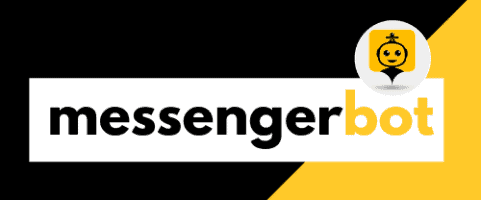Key Takeaways
- Understanding the Customer Acquisition Cost (CAC) is essential for optimizing marketing strategies and improving profitability.
- A good CAC ratio is typically 3:1, indicating effective customer acquisition against revenue generation.
- To calculate CAC, use the formula: CAC = Total Sales and Marketing Expenses / Number of New Customers Acquired.
- Reducing customer acquisition costs can be achieved through targeted marketing, enhanced customer retention, and leveraging automation tools like Messenger Bots.
- Regularly analyzing CAC trends helps refine sales strategies and optimize resource allocation for better returns.
In today’s competitive business landscape, understanding the cac cost to acquire customer is crucial for any organization aiming to thrive. This article delves into the intricacies of customer acquisition cost, exploring its definition, significance, and the various factors that influence it. We will clarify common misconceptions, such as whether customer acquisition cost is synonymous with CAC, and break down the essential components that contribute to this vital metric. Additionally, we will provide insights on how to calculate your cac cost to acquire customer, including practical examples and a step-by-step guide. By the end of this article, you will not only grasp what constitutes a good CAC ratio but also learn how to optimize your strategy for maximum efficiency. Join us as we navigate the complexities of cac cost of customer acquisition and equip you with the tools necessary to enhance your business’s growth potential.
What is the CAC cost of customer acquisition?
Understanding CAC: Definition and Importance
Customer Acquisition Cost (CAC) is a critical business metric that quantifies the total expenses incurred by a company to acquire a new customer. This cost encompasses various elements, including:
- Sales and Marketing Expenses: This includes salaries, commissions, advertising costs, and promotional activities aimed at attracting potential customers. According to HubSpot for marketing insights, effective marketing strategies can significantly lower CAC by targeting the right audience.
- Operational Costs: These are the costs associated with the infrastructure required to support customer acquisition, such as software tools, customer relationship management (CRM) systems, and other technologies that facilitate the sales process.
- Customer Support and Onboarding: The expenses related to onboarding new customers and providing initial support can also contribute to CAC. A smooth onboarding process can enhance customer satisfaction and retention, ultimately reducing long-term acquisition costs.
To calculate CAC, use the formula:
CAC = Total Sales and Marketing Expenses / Number of New Customers Acquired
Understanding CAC is essential for businesses as it helps in evaluating the effectiveness of marketing strategies and sales efforts. A lower CAC indicates a more efficient customer acquisition process, while a higher CAC may signal the need for strategic adjustments.
Recent studies suggest that leveraging automation tools, such as chatbots, can enhance customer engagement and streamline the acquisition process, potentially lowering CAC. For instance, Messenger Bots can facilitate immediate customer interactions, providing information and support that can lead to quicker conversions. For further insights, refer to authoritative sources such as the Harvard Business Review and the American Marketing Association, which provide in-depth analyses of customer acquisition strategies and their impact on business growth.
The Role of CAC in Business Strategy
Understanding the cac cost of customer acquisition is vital for shaping a successful business strategy. By analyzing CAC, companies can make informed decisions regarding their marketing budgets and resource allocation. A well-calibrated CAC allows businesses to:
- Optimize Marketing Spend: By identifying which channels yield the best customer acquisition results, businesses can allocate their marketing budgets more effectively, ensuring higher returns on investment.
- Enhance Customer Lifetime Value (CLV): A lower CAC can lead to a higher CLV, as businesses can invest more in retaining customers and improving their overall experience.
- Adjust Sales Strategies: Monitoring CAC trends helps businesses refine their sales tactics, ensuring they are aligned with customer expectations and market demands.
Incorporating tools like Messenger Bot can further enhance these strategies by automating customer interactions and providing valuable insights into customer behavior, ultimately supporting a more efficient customer acquisition process. For more on how to leverage automation in your customer acquisition strategy, check out ecommerce and customer acquisition.
What is the cost of acquiring a customer?
The cost of acquiring a customer, often referred to as customer acquisition cost (CAC), is a vital metric for businesses aiming to understand their marketing effectiveness and overall profitability. This figure represents the total expenses incurred to attract and convert a new customer, encompassing various elements such as marketing campaigns, sales team salaries, and promotional offers. By breaking down these costs, businesses can gain insights into their spending efficiency and identify areas for improvement.
Breaking Down the Cost of Customer Acquisition
To effectively analyze the cost of customer acquisition, it’s essential to consider the components that contribute to the overall CAC. The formula for calculating CAC is straightforward:
- Total Marketing Expenses: This includes all costs related to marketing campaigns, advertising, and promotional activities over a specific period.
- Sales Expenses: Factor in salaries, commissions, and overhead costs associated with the sales team.
- Total New Customers Acquired: Count the number of new customers gained during the same period.
The formula can be summarized as follows:
CAC = (Total Marketing Expenses + Total Sales Expenses) / Total New Customers Acquired
Understanding this formula allows businesses to pinpoint where their resources are being allocated and how effectively they are converting leads into customers. By optimizing these costs, companies can enhance their profitability and improve their marketing strategies.
Factors Influencing Customer Acquisition Costs
Several factors can influence the customer acquisition costs for a business. These include:
- Market Competition: In highly competitive markets, businesses may need to invest more in marketing and sales efforts to stand out.
- Target Audience: The demographics and preferences of the target audience can significantly affect acquisition costs. Tailoring marketing strategies to specific segments can lead to better conversion rates.
- Marketing Channels: Different channels have varying costs associated with them. For instance, digital marketing may offer lower CAC compared to traditional advertising methods.
- Sales Process Efficiency: A streamlined sales process can reduce the time and resources needed to convert leads into customers, thereby lowering CAC.
By analyzing these factors, businesses can develop targeted strategies to reduce their CAC and improve their overall marketing effectiveness. Implementing tools like Messenger Bots can also enhance customer engagement, further optimizing acquisition costs.
Is Customer Acquisition Cost the Same as CAC?
Understanding the distinction between Customer Acquisition Cost (CAC) and the broader term Cost of Customer Acquisition (CCA) is essential for businesses aiming to optimize their marketing strategies. While both terms are often used interchangeably, they can encompass different aspects of the acquisition process.
Clarifying CAC vs. Customer Acquisition Cost
Customer Acquisition Cost (CAC) specifically refers to the total expenses incurred to acquire a new customer, including marketing, sales, and operational costs. This metric is crucial for evaluating the effectiveness of various marketing strategies and sales efforts. In contrast, the Cost of Customer Acquisition (CCA) can be viewed as a broader term that may include additional factors such as customer retention costs and long-term engagement strategies.
To calculate CAC, divide the total costs associated with acquiring new customers by the number of new customers gained during a specific period. This calculation helps businesses assess their efficiency in attracting new clients. For instance, if a company spends $10,000 on marketing and sales in a month and acquires 100 new customers, the CAC would be $100.
Common Misconceptions About CAC
There are several misconceptions surrounding CAC that can lead to confusion among business owners:
- Misconception 1: CAC is only about marketing expenses. In reality, CAC encompasses all costs related to acquiring customers, including sales team salaries and operational costs.
- Misconception 2: A high CAC is always bad. While a high CAC can indicate inefficiencies, it may also reflect a premium product or service that justifies the cost.
- Misconception 3: CAC is static. In fact, CAC can fluctuate based on market conditions, competition, and changes in marketing strategies.
By clarifying these misconceptions, businesses can better understand how to calculate customer acquisition cost and optimize their strategies accordingly. For more insights on mastering customer acquisition cost, check out our guide on mastering customer acquisition cost.
Is CAC All Costs Spent to Acquire Customers in a Period?
Understanding the CAC cost of customer acquisition is crucial for any business aiming to optimize its marketing strategies. Customer Acquisition Cost (CAC) encompasses all expenses incurred to acquire new customers over a specific period. This includes marketing expenses, sales team salaries, and any overheads directly related to customer acquisition. By accurately calculating CAC, businesses can gauge the effectiveness of their marketing efforts and make informed decisions to enhance profitability.
Understanding the Components of CAC
To accurately calculate cac cost to acquire customer, follow these steps:
- Identify Costs: Include all relevant costs such as marketing expenses (advertising, promotions), sales team salaries, software tools, and any other overheads directly related to customer acquisition.
- Total Costs: Sum all identified costs for the designated period. For instance, if you spent $10,000 on marketing and $5,000 on sales salaries in a month, your total costs would be $15,000.
- Count New Customers: Determine the number of new customers acquired during the same period. If you gained 150 new customers, this figure will be used in the next step.
- Calculate CAC: Divide the total costs by the number of new customers. Using the previous example: $15,000 ÷ 150 = $100. Therefore, your CAC is $100.
- Analyze and Optimize: Regularly review your CAC to identify trends and areas for improvement. Consider implementing strategies such as targeted marketing campaigns or utilizing automation tools like Messenger Bots to enhance customer engagement and reduce costs.
For further insights, refer to authoritative sources such as HubSpot for marketing insights and Forbes on customer acquisition.
Timeframe Considerations in CAC Calculation
When calculating cac cost of acquisition, the timeframe is a critical factor. Businesses must decide whether to analyze CAC on a monthly, quarterly, or annual basis. Each timeframe can yield different insights into customer acquisition trends and marketing effectiveness. For instance, a monthly analysis may highlight immediate marketing impacts, while a quarterly review can provide a broader perspective on seasonal trends.
Additionally, understanding how long it typically takes to convert leads into customers can help refine CAC calculations. If your sales cycle is longer, you may need to adjust your CAC analysis to account for the time it takes to see returns on your marketing investments. This approach ensures that you are not only tracking costs but also aligning them with customer acquisition timelines.
For more detailed strategies on optimizing your CAC, explore resources like decoding customer acquisition costs and mastering customer acquisition cost.
What is a Good CAC Ratio?
A good Customer Acquisition Cost (CAC) ratio is typically considered to be around 3:1. This means that for every dollar spent on acquiring a customer, the business should aim to generate three dollars in revenue from that customer over their lifetime. This ratio indicates a healthy balance between investment in customer acquisition and the returns generated from those customers.
Defining a Good CAC Ratio for Your Business
To achieve and maintain an optimal CAC ratio, businesses should consider the following strategies:
- Optimize Marketing Channels: Analyze which marketing channels yield the highest return on investment (ROI). Focus on channels that attract high-quality leads at a lower cost, such as content marketing, social media, and search engine optimization (SEO).
- Enhance Customer Retention: Reducing churn can significantly improve the CAC ratio. Implement loyalty programs, personalized communication, and excellent customer service to retain existing customers and increase their lifetime value.
- Leverage Data Analytics: Utilize data analytics to understand customer behavior and preferences. This insight can help tailor marketing strategies to target the right audience more effectively, thus lowering acquisition costs.
- Invest in Automation Tools: Tools like Messenger Bots can streamline customer interactions, providing instant responses and support. This can enhance user experience, leading to higher conversion rates and lower CAC.
- Regularly Review and Adjust Strategies: Continuously monitor and assess your CAC ratio. Adjust your marketing strategies based on performance metrics to ensure that you are maximizing efficiency and effectiveness.
Industry Benchmarks for CAC Ratios
According to a study by HubSpot, companies with a CAC ratio of 3:1 or better are more likely to achieve sustainable growth. Additionally, research from the Harvard Business Review indicates that retaining customers is significantly less expensive than acquiring new ones, further emphasizing the importance of balancing CAC with customer lifetime value.
In conclusion, a good CAC ratio is essential for business sustainability. By optimizing marketing efforts, enhancing customer retention, leveraging data, and utilizing automation tools, businesses can improve their CAC ratio and drive long-term profitability.
How much should I spend on CAC?
Determining how much to spend on Customer Acquisition Cost (CAC) is crucial for sustainable business growth. It’s essential to understand its relationship with Customer Lifetime Value (LTV). CAC represents the total cost incurred to acquire a new customer, while LTV estimates the total revenue expected from that customer throughout their relationship with your business.
Determining Your Optimal CAC Budget
1. **Benchmark Ratios**: The widely accepted benchmark for a healthy business model is to maintain an LTV:CAC ratio of at least 3:1 or 4:1. This indicates that for every dollar spent on acquiring a customer, your business should generate $3 to $4 in revenue. This ratio helps ensure that your investment in customer acquisition is justified by the returns you expect to receive.
2. **Factors Influencing CAC**: Several factors can influence your CAC, including:
– **Marketing Channels**: Different channels (e.g., social media, email marketing, paid ads) have varying costs associated with customer acquisition. For instance, paid advertising may yield higher CAC compared to organic methods.
– **Target Audience**: The demographics and behavior of your target audience can affect acquisition costs. A niche market may require more tailored strategies, increasing CAC.
– **Sales Process**: A longer or more complex sales process can lead to higher CAC due to increased resources needed for customer engagement.
Balancing CAC with Customer Lifetime Value (CLV)
To effectively manage and reduce CAC, consider the following strategies:
– **Leverage Data Analytics**: Utilize analytics tools to track customer behavior and optimize marketing campaigns for better targeting and efficiency.
– **Enhance Customer Experience**: Improving customer service and engagement can lead to higher retention rates, ultimately lowering CAC over time.
– **Utilize Automation Tools**: Implementing automation tools, such as chatbots, can streamline customer interactions and reduce the time and cost associated with acquiring new customers.
Regularly monitor your CAC and LTV metrics to ensure they align with your business goals. Adjust your marketing strategies based on performance data to maintain a healthy ratio. For further insights, refer to authoritative sources such as HubSpot for marketing insights and Forbes on customer acquisition, which provide extensive research on CAC and LTV metrics. Understanding these dynamics will help you make informed decisions about your customer acquisition budget, ensuring sustainable growth for your business.
CAC Cost to Acquire Customer Formula
How to Calculate Customer Acquisition Cost
Calculating the Customer Acquisition Cost (CAC) is essential for understanding the efficiency of your marketing strategies. The formula to determine CAC is straightforward:
CAC = Total Sales and Marketing Expenses / Number of New Customers Acquired
To break this down further, you need to consider all costs associated with acquiring new customers, including advertising expenses, salaries of sales and marketing teams, software costs, and any other related expenditures. By dividing the total of these costs by the number of new customers gained in a specific period, you can ascertain how much you are spending to acquire each customer. This metric is crucial for businesses, especially those utilizing platforms like Messenger Bot, as it helps in evaluating the return on investment (ROI) of marketing efforts.
CAC Cost to Acquire Customer Calculation: Step-by-Step Guide
To effectively calculate your CAC, follow these steps:
1. **Identify Total Costs**: Gather all relevant expenses incurred in your sales and marketing efforts over a defined period. This includes digital advertising, content creation, salaries, and any tools or software used, such as Messenger Bot for automation.
2. **Determine New Customers**: Count the number of new customers acquired during the same period. This data can often be tracked through your CRM or analytics tools.
3. **Apply the Formula**: Use the CAC formula mentioned above. For example, if your total sales and marketing expenses are $10,000 and you acquired 100 new customers, your CAC would be $100.
4. **Analyze the Results**: Compare your CAC against your Customer Lifetime Value (CLV) to ensure that your customer acquisition strategies are sustainable. A good rule of thumb is to aim for a CAC that is less than one-third of your CLV.
By following this structured approach, you can gain valuable insights into your customer acquisition strategies and make informed decisions to optimize your marketing efforts. For more detailed insights on customer acquisition costs, consider exploring resources like HubSpot for marketing insights or Forbes for business insights.







